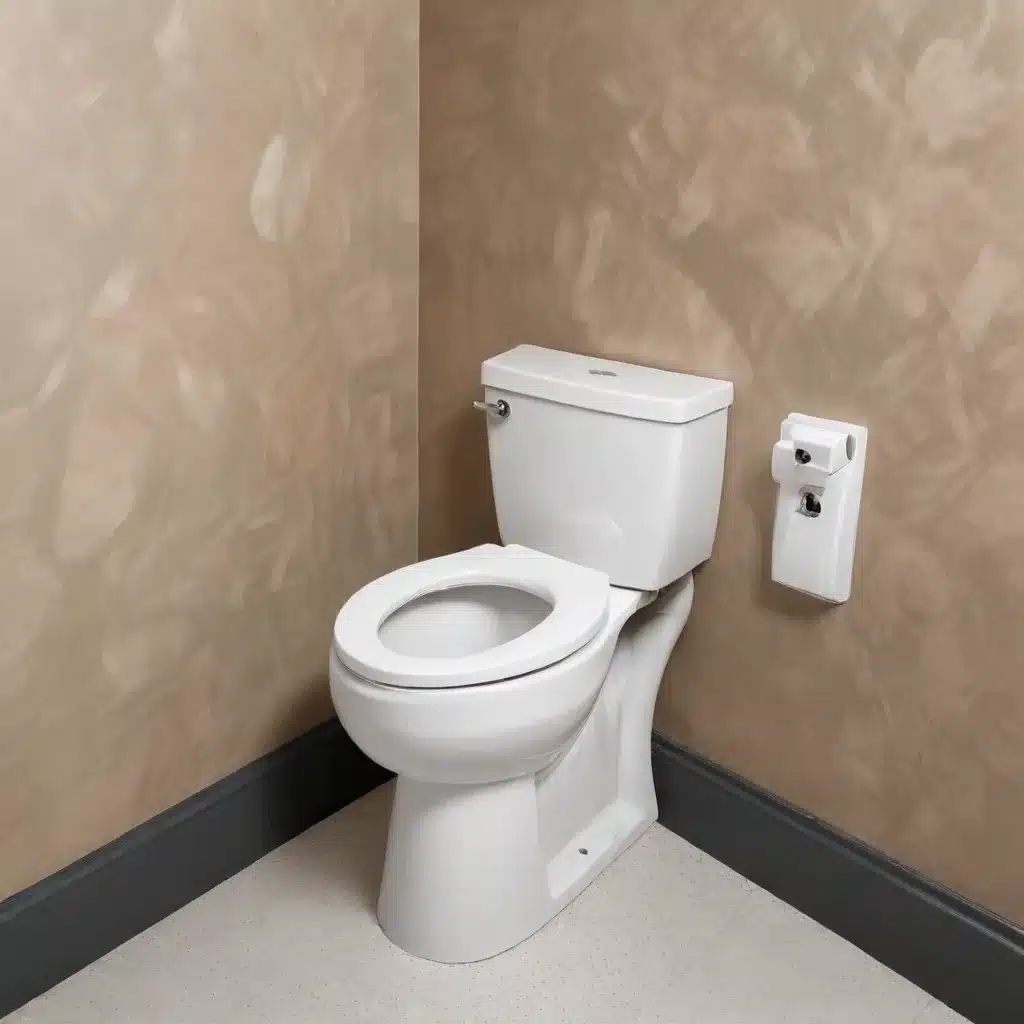
The Need for Water-Efficient Toilets
In the average American home, toilets account for nearly 30% of all indoor water usage. However, older, inefficient models can waste as much as 6 gallons per flush (GPF), leading to substantial water and cost waste over time. Thankfully, innovations in toilet design have allowed for far more efficient models that use only 1.28 GPF or less, providing equal or superior performance compared to traditional toilets.
As climate change brings more extreme weather events like droughts, the need to conserve precious water resources has never been more pressing. By replacing old, water-guzzling toilets with high-efficiency models, households can dramatically reduce their water consumption and utility bills. In fact, the EPA estimates that the average family can save up to 13,000 gallons of water annually by upgrading to a WaterSense-labeled toilet, translating to over $170 in yearly cost savings.
Understanding the Evolution of Toilet Efficiency
The federal standard for toilet water usage was set at 1.6 GPF in 1992, marking a significant improvement over the 3.5-7 GPF models that were common before then. However, the performance of these “low-flow” toilets in the 1990s was sometimes criticized for requiring double flushing to clear waste effectively, leading to consumer dissatisfaction.
Fortunately, toilet manufacturers have since made great strides in redesigning and re-engineering their products to achieve both exceptional water efficiency and superior performance. The development of the WaterSense labeling program by the EPA has been instrumental in this progress, establishing rigorous criteria for water savings, waste removal, and user satisfaction.
Today’s WaterSense-labeled toilets must comply with the same rigorous performance requirements as standard models, including:
- Solid waste removal of at least 350 grams
- Minimum flush volume of 1.1 gallons
- Successful clearing of 350ml of test media
These advancements have allowed water-efficient toilets to not only save substantial amounts of water but also provide a comparable, if not superior, user experience compared to their older, less efficient counterparts.
Exploring the Different Types of Water-Efficient Toilets
When it comes to upgrading to a more water-conserving toilet, homeowners have several options to consider, each with its own set of advantages and considerations.
Low-Flow Toilets
Low-flow toilets utilize a single flush feature that uses only 1.28 GPF, representing a 20% reduction in water usage compared to the current federal standard of 1.6 GPF. These models can provide significant savings on water bills, with an estimated annual cost of just $10.76 per year, compared to $21.27 for a standard toilet. While the upfront cost may be higher, the long-term savings can often pay for the upgrade in less than 7 years.
Dual-Flush Toilets
Dual-flush toilets offer the most flexibility, allowing users to choose between a “reduced flush” mode for liquid waste (using only 0.8 gallons) and a “full flush” mode for solid waste (using 1.6 gallons). Studies have shown that this technology can reduce water consumption by up to 67% compared to conventional toilets. With some regions even mandating the use of dual-flush systems in new construction, these models are becoming increasingly popular for their water-saving benefits.
Power-Assist Toilets
Power-assist or pressure-assisted toilets utilize pressurized air in the tank to create a more forceful flush, allowing for effective waste removal with as little as 1.1-1.2 gallons per flush. While these models tend to be more expensive and noisier than gravity-fed alternatives, they can offer superior efficiency, reduced maintenance, and improved performance, especially in homes with aging plumbing infrastructure.
Waterless Toilets
For the most water-conscious homeowners, waterless or composting toilets present an eco-friendly solution that completely eliminates the need for water usage in the flushing process. These systems, which can cost between $560 and $2,000, rely on natural decomposition to handle waste, producing a nutrient-rich compost as a byproduct. While they require more hands-on maintenance, waterless toilets can be an excellent choice for remote locations or areas facing acute water scarcity.
Maximizing the Benefits of Water-Efficient Toilets
Upgrading to a high-efficiency toilet is just the first step in minimizing water waste and reducing utility costs. Homeowners can further optimize their water savings through simple retrofits, such as:
- Toilet displacement bags: These inexpensive devices displace 0.5 gallons of water per flush, reducing water usage in existing toilets.
- Toilet fill cycle diverters: Similar to displacement bags, these devices help reduce the water volume used during each flush.
By combining a water-efficient toilet with these simple add-ons, households can maximize their water savings and contribute to the conservation of this precious resource.
Conclusion: Flushing Away Water Waste, One Toilet at a Time
As the effects of climate change continue to challenge our water infrastructure, the need for water-efficient plumbing solutions has never been more apparent. By replacing old, inefficient toilets with high-performance, low-flow models, homeowners can dramatically reduce their water usage and utility costs, all while doing their part to protect the environment.
Whether opting for a low-flow, dual-flush, power-assist, or even a waterless toilet, the benefits of upgrading are clear: significant water savings, improved performance, and long-term cost reductions. By making this simple, yet impactful, change, homeowners can contribute to a more sustainable future, one flush at a time.
To learn more about the latest water-efficient toilet technologies and how they can benefit your home, be sure to visit https://ddplumbingandheating.co.uk/. Our team of experienced plumbing and heating experts is here to guide you through the process of selecting and installing the perfect high-efficiency toilet for your needs.


